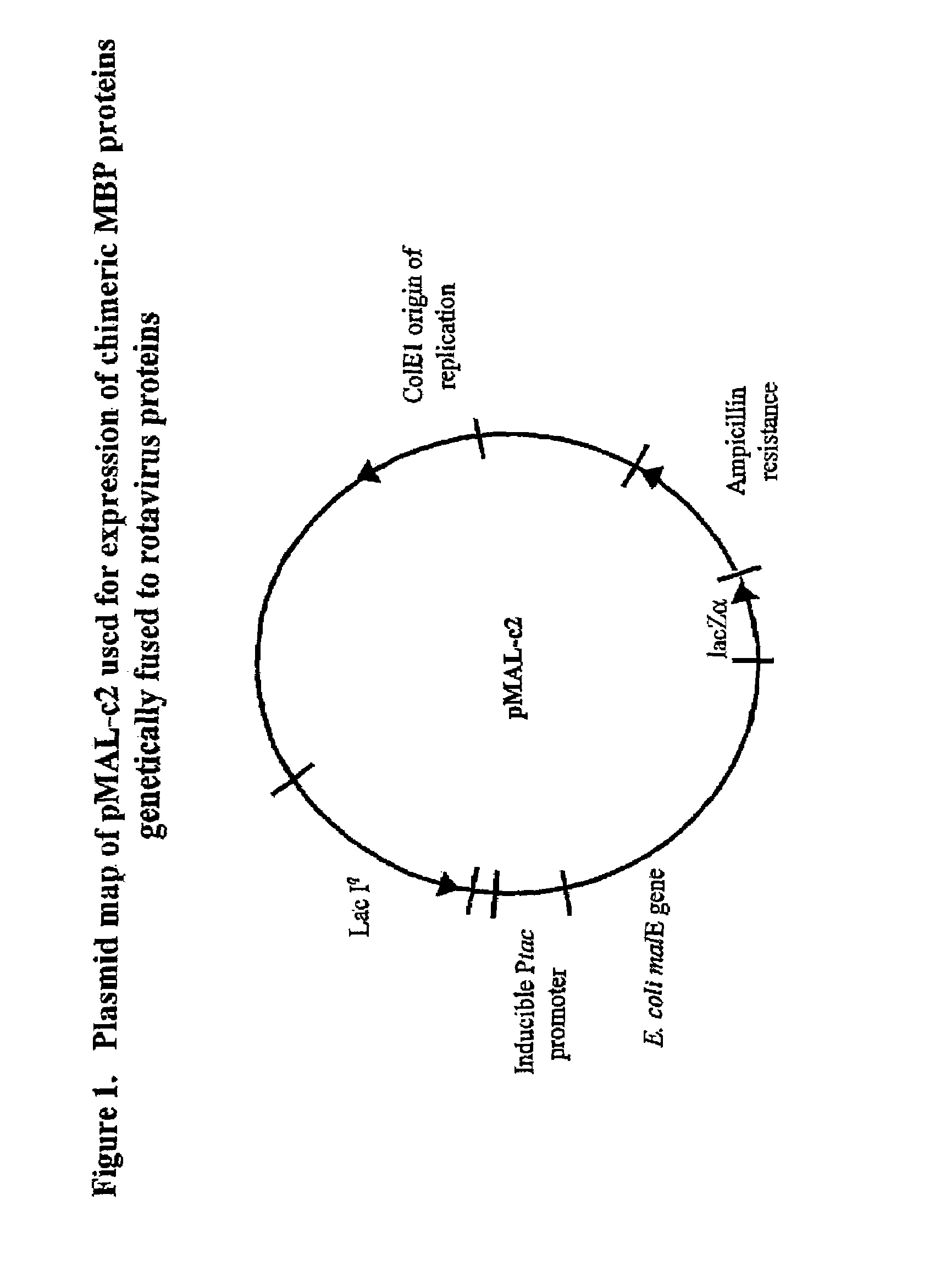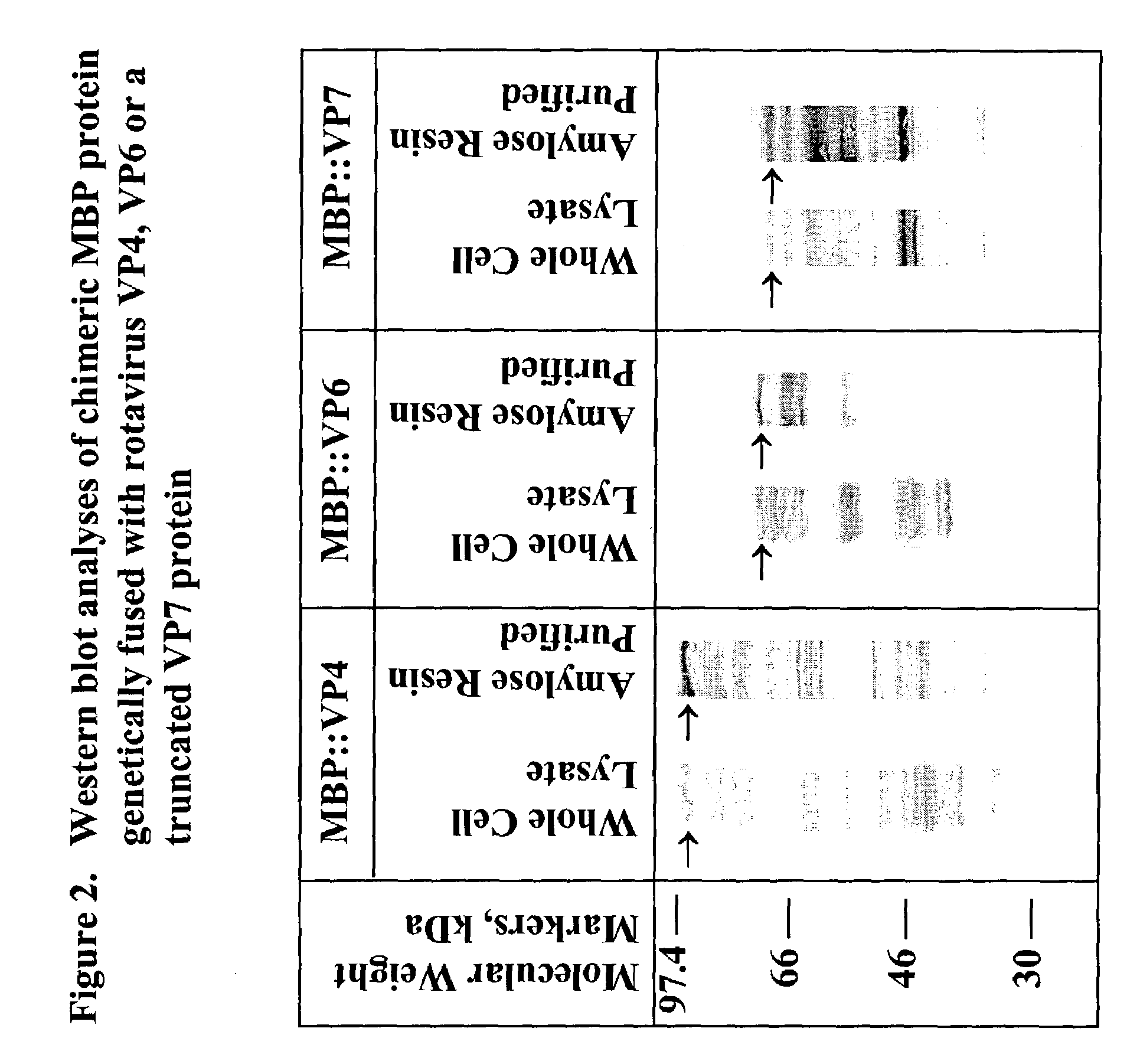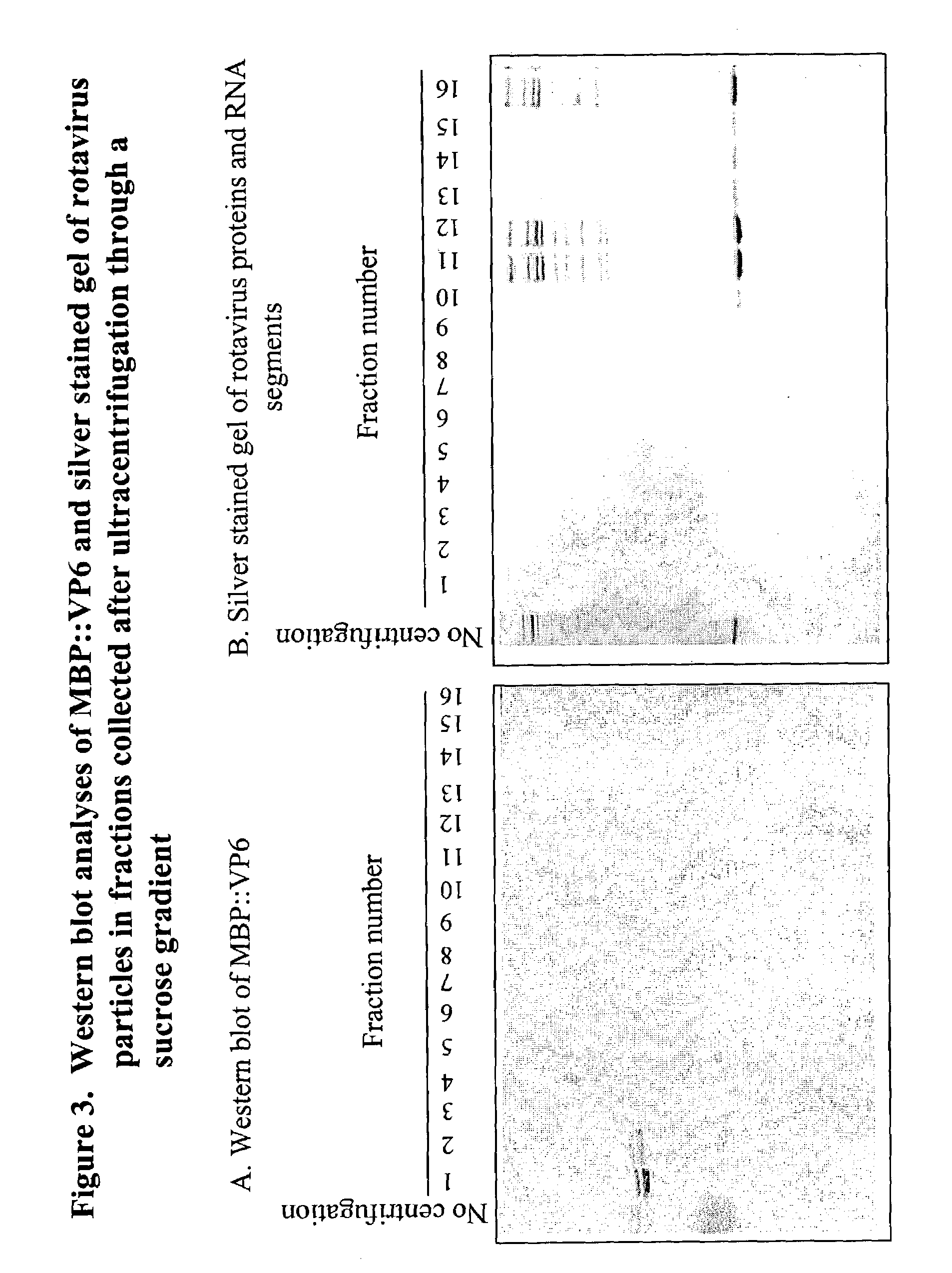Rotavirus subunit vaccine
a subunit vaccine and rotavirus technology, applied in the field of rotavirus subunit vaccines, can solve the problems of high morbidity from rotavirus disease, high risk of reversion, and difficult generation of rotavirus vaccines, and achieve the effect of increasing the immunological protection of said individual against rotavirus infection
- Summary
- Abstract
- Description
- Claims
- Application Information
AI Technical Summary
Benefits of technology
Problems solved by technology
Method used
Image
Examples
example 1
Construction of Recombinant pMAL-c2 Plasmids
[0048]Recombinant plasmids pMAL-c2 / EDIM4, pMAL-c2 / EDIM6 and pMAL-c2 / LDIM7 were constructed using pMAL-c2 (New England Biolabs, Beverly Mass.) by insertion of cDNAs encoding full length VP4 or VP6, or a truncated form of VP7 (TrVP7) of rotavirus strain EDIM (FIG. 1). cDNAs were synthesized by polymerase chain reaction (PCR) using the plasmids pGEM-3Z / EDIM4, pGEM-3Z / EDIM6 and pGEM-3Z / EDIM7 as templates and gene specific primers determined by nucleotide sequencing of the gene inserts. The nucleotide sequences have been deposited into GenBaiik nucleotide sequence database and assigned with the Accession Numbers AF039219, U65988 and AF039220 for VP4, VP6 and VP7 gene respectively.
[0049]The murine EDIM strain of rotavirus used for the construction of the pGEM recombinant plasmids was originally isolated from the stool of an infected mouse and adapted to grow in cell culture by passage in MA-104 cells in the laboratory. A triply plaque-purified i...
example 2
Expression and Purification of Fusion Proteins
[0052]Recombinant bacteria were grown as an overnight culture (37° C., shaken at 215 rpm) in rich broth (tryptone, 10 gm; yeast extract, 5 NaCl, 5 gm; glucose, 2 gm and 100 mg of ampicillin per liter). On the following day, 10 ml of overnight cell culture were inoculated into 1 liter of rich broth containing glucose and ampicillin. The culture was grown until the optical density A600 reached 0.6. IPTG was then added to 0.3 mM to induce expression of fusion protein. Growth was continued for 3 hours.
[0053]Cells were harvested by centrifugation (4,000 g; 20 min at 4° C.), resuspended in PBS, and subjected to centrifugation. The pellet was frozen at −20° C., thawed slowly in cold water, and resuspended in a total of 50 ml of buffer L (5 mM NaH2PO4, 10 mM Na2HPO4, 30 mM NaCl, 10 mM 2-beta mercaptoethanol and 0.2% Tween 20, 1 mM PMSF, 25 mM benzamidine, and 200 mg / L of lysozyme). After digestion for 15 min at room temperature (rt), the suspens...
example 3
Biochemical Characterization of MBP::VP6 Fusion Protein
[0056]It has been shown that recombinant VP6 expressed by the bacculovirus expression system forms structures that resemble double-layered rotavirus particles when examined by electron microscopy. Purified MBP::VP6 fusion protein was analyzed by sucrose gradients to determine if these fusion proteins assembled into organized structures resembling virus particles that could be fractionated in a sucrose gradient. MBP::VP6 was subjected to centrifugation (SW 50, 35,000 g, 60 min) through a 4 ml sucrose gradient (20-50%) on a 1 ml cesium chloride cushion (60%). A total of 16, 300-μl fractions were collected. Distribution of MBP::VP6 in the sucrose gradient and cesium chloride cushion was analyzed by Western blot analysis and distribution of virus particles was analyzed by silver nitrate staining of the SDS-gel (FIG. 3). The results showed that MBP::VP6 remained in the top 4 fractions of the gradient, while double-layered virus parti...
PUM
| Property | Measurement | Unit |
|---|---|---|
| Volume | aaaaa | aaaaa |
| Volume | aaaaa | aaaaa |
| Volume | aaaaa | aaaaa |
Abstract
Description
Claims
Application Information
 Login to View More
Login to View More - R&D
- Intellectual Property
- Life Sciences
- Materials
- Tech Scout
- Unparalleled Data Quality
- Higher Quality Content
- 60% Fewer Hallucinations
Browse by: Latest US Patents, China's latest patents, Technical Efficacy Thesaurus, Application Domain, Technology Topic, Popular Technical Reports.
© 2025 PatSnap. All rights reserved.Legal|Privacy policy|Modern Slavery Act Transparency Statement|Sitemap|About US| Contact US: help@patsnap.com



